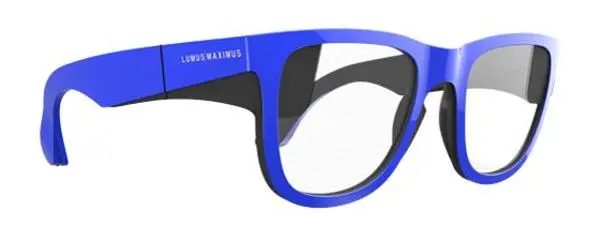Hi-tech smart glasses connecting rural and remote aged care residents to clinicians
SOURCE: HTTPS://HELLOCARE.COM.AU/
NOV 20, 2023
Optical engines for AR benefit from reflective waveguides
SOURCE: EDN.COM
APR 11, 2022

Two optical engines from Lumus leverage the company’s 2D reflective waveguide architecture for augmented reality (AR) eyewear. Following the success of its Maximus 2D expansion waveguide display launched 18 months ago, the company is expanding its Maximus line to meet specific customer demands for mass production of AR glasses that will be priced for the consumer market.

Intended for smart glasses that resemble ordinary eyeglasses and are meant to be wore all day, the Maximum 1080P optical engine delivers a 40° field of view, luminance of greater than 4000 nits, and resolution of 1080 pixels. It has a 12×12-mm eye box with an aspect ratio of 16:9. The second optical engine, the Maximus 14402P provides a 50° field of view, luminance of greater than 3000 nits, and resolution of 14402 pixels. This device also has a 12×12-mm eye box, but its aspect ratio is 1:1 for enhanced immersion.
Both products share the advantages of the 2D reflective waveguide architecture: brightness that performs well even outdoors in full sunlight, a distortion-free image with unparalleled battery efficiency, and uniform color producing a true white. The multi-patented reflective waveguide technology uses the simplicity of partially reflective mirrors to direct light from a micro projector with almost no forward light leakage.
Lumus will introduce both of the optical engines within the next year. The Maximus 1080P is scheduled for release in Q3 2022, followed by the Maximus 14402P in Q4 2022.
LATEST NEWS
Augmented Reality
Hi-tech smart glasses connecting rural and remote aged care residents to clinicians
NOV 20, 2023
WHAT'S TRENDING


Data Science
5 Imaginative Data Science Projects That Can Make Your Portfolio Stand Out
OCT 05, 2022

SOURCE: HTTPS://HELLOCARE.COM.AU/
NOV 20, 2023
SOURCE: HTTPS://WWW.EASTMOJO.COM/
OCT 31, 2023
SOURCE: HTTPS://WWW.ZDNET.COM/
SEP 27, 2023
SOURCE: HTTPS://WWW.AUSTRALIANJEWISHNEWS.COM/
SEP 28, 2023
SOURCE: HTTPS://WWW.SCIENCEDAILY.COM/
AUG 09, 2023
SOURCE: HTTPS://MOBIDEV.BIZ/BLOG/
JUL 11, 2023